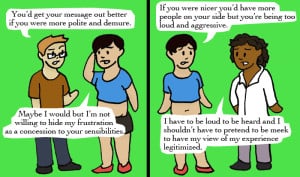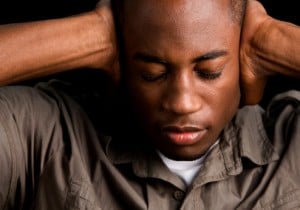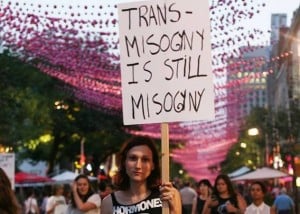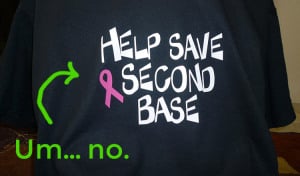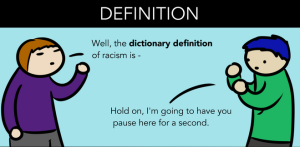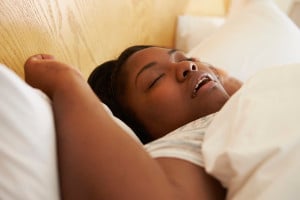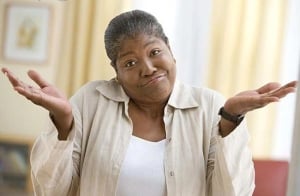
Source: Huffington Post
Often, oppressive assumptions and myths are so embedded in our society that it is difficult to recognize how detrimental they are.
In order to effectively tackle inequality, we must carefully examine the fundamental assumptions and attitudes that support oppression.
Firstly, I want to point out that I’m cisgender.
I’m not a trans person, and as such, I am definitely not the authority on what is cissexist and what is not.
My aim here, however, is to educate others – mainly other cisgender people – and provoke discussion about cissexism within society.
I welcome any corrections, and am more than happy to listen to anyone who believes I did not check my cisgender privilege.
What Is Cissexism?
We live in a society that assumes gender based on genitals. When we are born, we are categorized as a gender based on the appearance of our genitals.
“Transgender” is a word that generally refers to people who do not identify with the gender they were categorized as at birth.
A person with a penis would be classified as a boy, but will identify as a woman. Therefore, this person is a woman. Likewise, someone with a vagina might identify as a man.
Many people do not feel like solely a man or a woman.These people often refer to themselves as non-binary.
Trans* people can experience gender in a number of different ways.
As such, the existence of people who identify as transgender essentially challenges the idea that gender = genitals.
Unfortunately, the conflation of gender with genitals is deeply rooted in society.
It is seen as “normal” and “natural” to identify with the gender associated with one’s genitals. As a result, transgender people are often labelled unnatural or abnormal, and are oppressed, marginalized, and underrepresented by society.
Cisgender people – people who identify with the gender they were categorized as at birth – enjoy a range of privileges over trans* folk.
We often use the word “transphobia” to refer to a range of negative attitudes towards trans* folk.
While the difference between cissexism and transphobia is not entirely clear, and many people use the terms interchangeably, cissexism is often thought to be a more subtle form of transphobia.
By “subtle,” I mean that it is less visible to cisgender people. Despite this, it is no less damaging.
In fact, it could be argued that it is more damaging as fewer people notice it – while most decent people would be quick to condemn physical attacks on trans* folk, fewer people would notice how harmful it is to assume that only women have vaginas.
However, the very attitude that regards cisgender as the norm and others the trans* community leads to the denial of trans* people’s rights.
Our society regularly makes cissexist assumptions.
It assumes that all people identify with the gender they were categorized as at birth, based on their genitals. Assuming all people are cisgender results in cisgender people being seen as “normal” and “natural”, while transgender people are seen as the opposite – “abnormal” and “unnatural.”
This attitude toward the trans* community is what leads to discrimination and transphobic attacks.
How Should We Tackle Cissexism?
In order to eradicate transphobia, we need to tackle cissexism.
Questioning cissexism might seem like a difficult thing for cisgender people to do as it requires us to challenge our thinking at a very fundamental level. But it is still absolutely necessary.
Think about it: If challenging cissexism seems exhausting for us cisgender folk, how exhausting must it be to be a trans* person living in a cissexist society?
If we want to stand in solidarity with the trans* community – or be decent human beings – we should be prepared to do difficult work in order to challenge oppressive ideas.
That being said, we’re all socialized to be cissexist.
So if you’re working toward allyship and you do slip up once in a while, don’t hate yourself for it. I used to wallow in my guilt every time I realized I had said something inadvertently racist, sexist, cissexist, ableist, or homophobic.
But guilt doesn’t help anyone. Rather, it has a pacifying, negative effect on people.
Instead of overindulging in shame, I propose that we apologize, educate ourselves, and learn from the mistake so that we do not repeat it.
This allows us to continue to focus on the people we’re trying to support, rather than our own feelings.
But beyond recognizing and owning up to our own mistakes, we can start tackling cissexism by taking a look at a few cissexist assumptions and dissecting them.
It is necessary for us to think about why they are harmful, how they contribute to cissexism, and how we can change it.
Identifying Cissexism
While the list of instances of cissexism is endless, I’ve decided to start by discussing three.
The assumptions in these situations are ones we’ve probably all made at some point in our lives (I know I still need to work on number three!). But it’s important for us to work toward changing our attitudes, and those of people around us.
1) “Is it a boy or a girl?”
This is one of the first questions that most people ask when they find out that someone is pregnant.
An idea that many people will find hard to wrap their heads around is that a sonogram will not be able to tell them what their child’s gender is.
Since genitals do not determine gender, you actually won’t know your child’s gender identity until they’re able to tell you.
To assume the child’s gender based on their genitals is to assume that the child is cisgender.
This is a cissexist assumption – there is a chance that the child is trans*, and if this is the case, they should not feel othered.
I’ve found that plenty cisgender supporters of the trans* community assume their children to be cisgender, too.
This is an extremely difficult issue to navigate as raising a child without imposing a gender identity upon them is extremely tricky. Cissexism is so ingrained into our souls that we can hardly imagine freeing our children from it. It’s a good idea to think about how we could make parenting less cissexist.
I don’t know if I would ever have children, but if I did, I would raise them without choosing their gender identities for them. I don’t think I would be able to reconcile my pro-trans* views with raising my child in a cissexist manner.
Also, ya know, I don’t like the idea of defining my child by their genitals. Creepy!
2) Sexual Education
I’m a born-and-bred South African. While I can’t speak for the rest of the world, I can safely say that the sexual education in South Africa is problematic. Heterosexism, impracticality, sexism, and slut-shaming aside, it is also extremely cissexist.
From a young age, we are taught that little girls have vaginas and little boys have penises. Later, we are taught about a “woman’s reproductive system” and a ”man’s reproductive system.”
In Life Orientation, we discuss women using oral contraception and men using condoms.
In all of these instances, gender is conflated with genitals.
Additionally, Life Sciences (biology) can espouse cissexism.
An over-simplified study of genetics tells us that women have XX chromosomes and that men have XY chromosomes. In reality, there are many instances in which people with XX chromosomes have penises and people with XY chromosomes have vaginas.
Even if the presence of XX chromosomes always resulted in the presence of a vagina, we know that not everyone with a vagina is a woman.
A simple addition to the curriculum could make a world of difference.
Schools are the perfect place to teach children and adolescents about transgender issues.
This being said, a change in curriculum seems a far-off dream for most of us. Instead, we can aim to educate the young people in our lives about trans* and intersex issues as best as we can.
When explaining genitals to smaller kids, explain that many women are born with penises, and that many boys are born with vaginas, and that many people are not men or women, or are a bit of both. And all of that is perfectly alright.
What matters is how one feels and identifies – not one’s private parts.
Some people might want to change their bodies to reflect their gender identity, but some might not – and either way, it’s perfectly okay.
When it comes to sexual education at a school level, we can talk about bodies typically associated with being male and those associated with being female.
We should explain that many people are born with ambiguous genitalia, which is usually referred to as intersex. This is perfectly okay, and this is natural.
Emphasize that genitals do not determine gender.
Many parents, teachers, and care-givers might be tempted to oversimplify and generalize when approaching sex ed.
They might simply tell their children/charges that boys have penises and girls have vaginas.
Even those who stand in solidarity with the trans* community might think that it would be better to simplify the message and allow the child to learn about transgender and intersex people later on in life.
Against this, M.A. Melby argues:
“What tying ‘penis’ to boys and ‘vagina’ to girls does is make genitalia part of what defines a ‘boy’ and a ‘girl’ for the child. Children are in the cognitive stage where they trust authority to define what things are, what is right and wrong, and what the fundamental models of the universe are.”
She goes on to say that teaching generalizations as the truth can be harmful.
Most men have penises. Few women are presidents.
If we can justify teaching our children that all men have penises, we could use the same logic to justify teaching our daughters that no women ever become presidents.
If we wouldn’t teach our children sexism, why would we teach them cissexism?
Teaching cissexism at an early stage will make it harder for children to change their thinking when they’re older. This requires a lot of unlearning and relearning.
It would be a lot easier to simply nip cissexism in the bud by teaching your children the truth.
3) Feminist Activism
Lauren Kacere recently wrote about trans* exclusion in the feminist movement as well as how and why we should work towards making the movement trans-inclusive. Transphobia in feminism is a huge issue, but even seemingly trans-inclusive feminism can be cissexist.
Reproductive rights advocacy is an area where cissexist assumptions are often made.
Rights pertaining to abortion and contraception are often referred to as “women’s reproductive rights.” This is harmful as it assumes that the only people who need abortions are women.
By extension, it assumes that the only people who possess uteruses are women – another example of the conflation of genitals with gender.
This problem was identified by #ProTransProChoice campaign, which sought to encourage organisations such as Planned Parenthood and NARAL to use more trans-inclusive language.
As the campaign organizers point out in their change.org petition:
“The rhetoric of the pro-choice movement is typically based around the assumption that only folks who identify as women are hurt by restrictions on reproductive health care – such as abortion and contraception. #StandWithTexasWomen took the stage in 2013; ‘Trust Women’ has been the mantra of this movement for decades.”
Often, pro-choice citizens complain about men dominating discussions about abortion, particularly in politics and law-making bodies. Many people argue that men should not have so much say over “women’s” reproductive rights.
Let’s remember that many men can fall pregnant, and they might need abortions.
Instead of simply saying that men should not dominate discussions about abortion, we should say that cis men should not dominate discussions about abortion.
Am I saying that pro-choice campaigns and organizations are transphobic? No – indeed, most reproductive rights advocacy appears to be very inclusive of the trans* community.
But the language they use, and the language the media and the public uses, needs to change to demonstrate that.
***
There are countless other examples of everyday cissexism – from bra and tampon commercials aimed only at women, to bathrooms being divided by gender, to ””lesbian sex” being regarded as sex involving vaginas only.
Got more examples you’d like to add? Advice on how to eradicate cissexism from our everyday speech? Leave them in the comments!
[ultimatesocial_facebook custom_class=”fb-btn-us”] [ultimatesocial_twitter custom_class=”tw-btn-us”]
Want to discuss this further? Login to our online forum and start a post! If you’re not already registered as a forum user, please register first here.
Sian Ferguson is a Contributing Writer at Everyday Feminism. She is a South African feminist currently studying towards a Bachelors of Social Science degree majoring in English Language and Literature and Gender Studies at the University of Cape Town. She has been featured as a guest writer on websites such as Women24 and Foxy Box, while also writing for her personal blog. In her spare time, she tweets excessively @sianfergs, reads about current affairs, and spends time with her gorgeous group of friends. Read her articles here.
Search our 3000+ articles!
Read our articles about:
Our online racial justice training
Used by hundreds of universities, non-profits, and businesses.
Click to learn more





